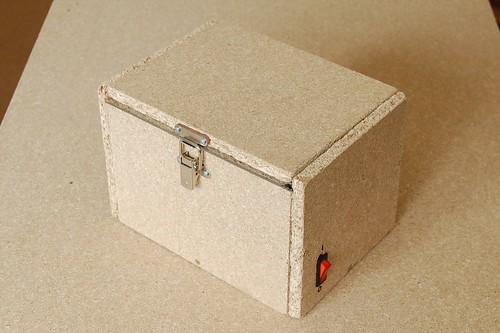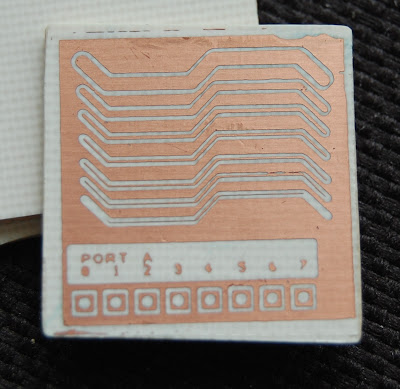.. _pcb-exposure-box:
PCB Exposure Box
================
:date: June 10, 2010
.. raw:: html

This summer I finaly decided to start making my own PCBs. The preferred
method for making PCBs at home is photolithography. The PCBs used have a
layer of photo resist, which is exposed to a source of light through a mask.
The exposed areas are then removed using a special developer chemical.
Lastly, the PCB is dipped into the etchant and the copper is removed from
the areas unprotected by the photoresist.
The first thing I needed was a light source. I decided to build a small box
for exposing my PCBs.
3D modeling
-----------
I began by creating a 3D model of the box usign Google Sketchup. This
allowed me to spot any mistakes and tailor the design to suit my needs.
.. image:: static/exposure-box-model.png
Bill of materials
-----------------
I used the following parts to make this box:
* Chipboard
* Plexiglass for the window
* Fluorescent lamp
* Reflector from some old lamp
* IEC socket and cable
* Power switch
* Latch
* Pair of hinges
* Sponge cloth
* Screws, glue
Results
-------
Below is the picture of a test PCB. The safe limit of track width seems
to be around 0.2-0.25mm. This could be influenced by the source of light.
While experimenting with the timing, I got an impression that UV light
could do a better job as it would allow reduced exposure times.
.. raw:: html

Track widths from top to bottom are:
#. 1.27mm
#. 0.64mm
#. 0.38mm
#. 0.25mm
#. 0.20mm
#. 0.15mm
#. 0.10mm
Links
-----
* `Mike's article on PCB making at electricstuff.co.uk `_
* `A slightly more detailed picture of the box `_
